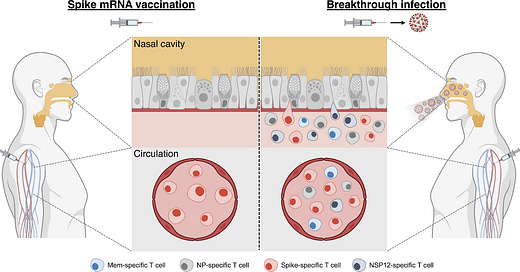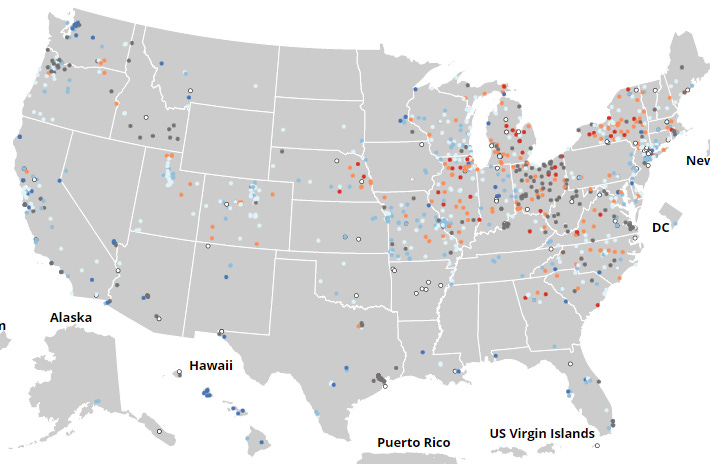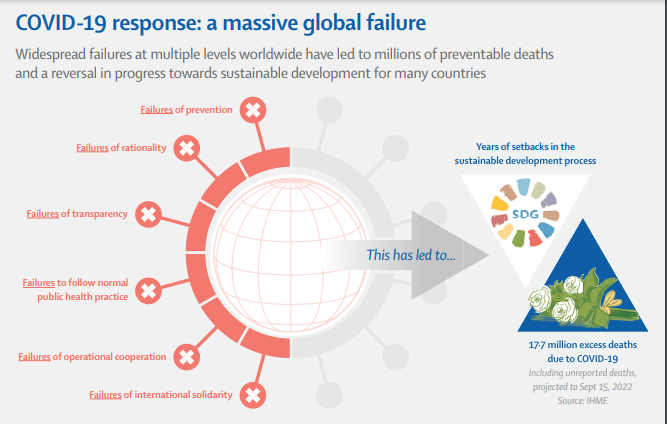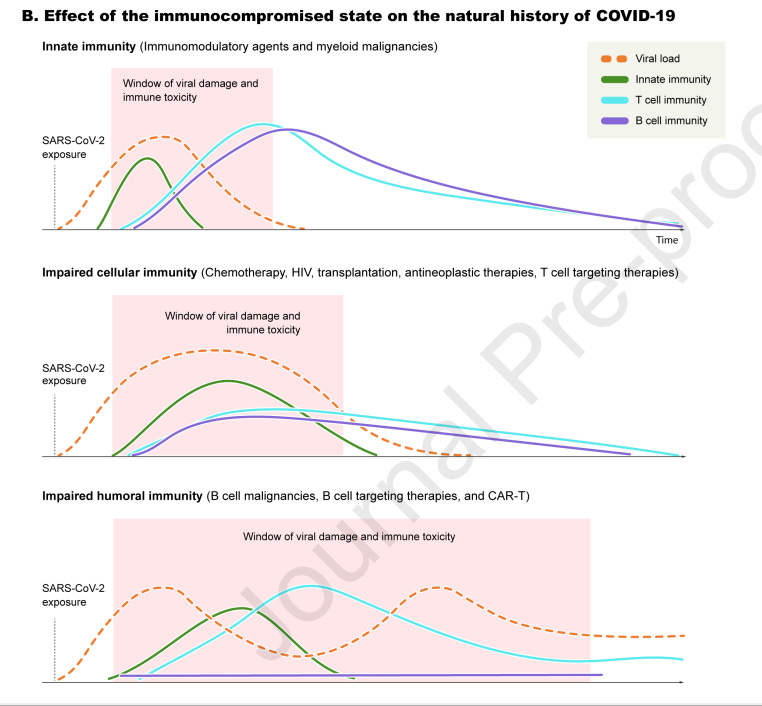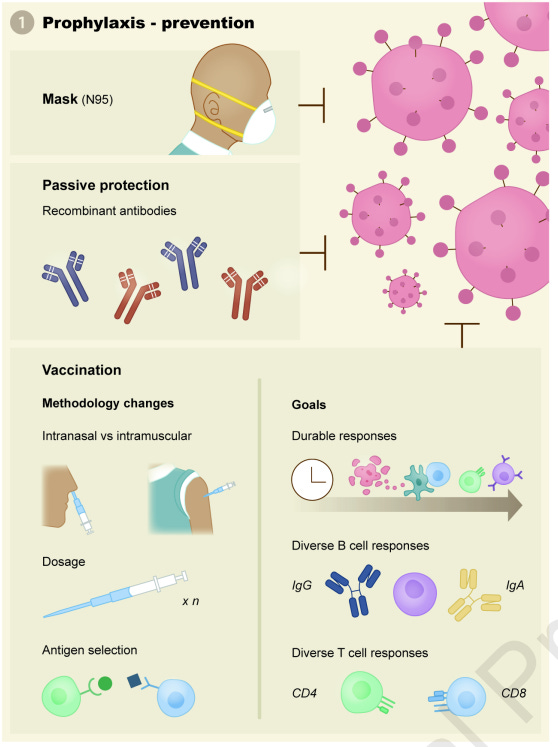COVID news 9/16/22
Hi all,
The new bivalent booster is now available in pharmacies. The Pfizer bivalent booster has 15 µg of mRNA for the original virus plus 15 µg of mRNA encoding the Omicron BA.4/5 virus spike protein. The Moderna Bivalent booster has 25 µg of mRNA for the original virus plus 25 µg of mRNA for the BA.4/5 virus spike protein. The bivalent vaccines protect more broadly against SARS-CoV-2 variants. Past boosters have been shown to decrease risks of Long Covid as well. The rollout of previous boosters was not great- only 30% of those qualified for the last boosters actually got them in the United States, but I really hope that the rollout and public health messaging for the new bivalent booster will be better. You can schedule your new bivalent booster vaccine appointment here: https://www.vaccines.gov/search/. Mixing and matching boosters (ie. getting a Pfizer booster if you previously had Moderna vaccines) can help to broaden the immune response as well.
The Lancet COVID-19 Commission came out yesterday with a 57 page article saying that "the global COVID-19 response has been a massive global failure.." The accompanying editorial in the Lancet entitled "COVID-19: the case for Prosocialty" discusses how our actions affect others. To quote the Lancet COVID-19 Commission, "governments, regulators, and institutions must be reoriented toward society as a whole, rather than the interests of individuals—a concept the Commissioners call Prosocialty. Without this shift, the world is vulnerable and unable to tackle effectively any global threat."
On a positive note, the CDC reported this week that hospital mortality from SARS-CoV-2 is decreasing. With the Delta variant hospital mortality was 15%, but hospital mortality during the late Omicron period dropped to 4.9%. The significant reduction in mortality comes from a combination of having a better immunity wall with vaccinations and prior infections, new antiviral drugs like Paxlovid which help protect high risk patients from hospitalization and death if taken early, and the fact that the Omicron variant may be less pathogenic.
Long COVID:
Long Covid is a condition that affects 10 to 20% of people who get a Covid infection, even if it was mild. It appears that this holds true with newer variants too. A new preprint article shows that 21.5% of people have Long Covid symptoms four weeks after an Omicron BA.5 infection.
The WHO reported yesterday that in Europe, more than 17 million people had Long Covid in 2020 to 2021. There were also 145 million people worldwide that had long Covid during those two years. The amount of disability from this virus is astounding. Long COVID truly is a new pandemic on top of another pandemic. We need to study causes of Long COVID to be able to target them with medications.
Governments need to focus on social support and rehabilitation needs for the millions of people with long Covid. Employers will need to provide accommodations for people with long Covid who are unable to work full schedules. Globally, we need to prepare.
There were two really good articles (in Science and in the Journal of Advanced Research) this week comparing Long Covid to myalgic encephalomyelitis (ME/CFS). There is significant overlap for Long Covid and ME/CFS in onset, progression and symptoms. There are also similar pathologic changes in different systems in the body. Long Covid may actually represent several different post viral syndromes that may require different treatments depending on what symptoms they cause. There are currently no validated treatments for Long Covid but some like naltrexone are being studied. However, in order to understand what medications can treat long Covid, we need to start to understand the causes of long Covid so that we can target these pathways.
A very interesting, and quite frankly scary, prospective study in Nature shines a light on long term cardiac pathology on MRI after mild Covid infections. In this study of 346 people with mild Covid, 73% had cardiac symptoms at three months and those who were symptomatic had myocardial inflammation seen on MRI. Biomarkers of cardiac injury were not elevated despite the cardiac MRI findings. Almost one year after infection, 57% of mild Covid patients had persistent cardiac symptoms and those who remained symptomatic had diffuse myocardial edema on MRI. The authors noted that ongoing cardiac inflammation could be responsible for lingering cardiac symptoms in previously well individuals with mild initial COVID-19 illness.
By studying people who don't get COVID ("Novids") despite exposure to the virus and by studying immunocompromised people whose immune systems have certain defects that make it hard to fight off COVID, we can learn more about what causes and how to better treat COVID. There was an excellent review of SARS-CoV-2 in immunocompromised individuals this week showing that immunocompromised people, and particularly those with hematologic malignancies, are at risk for Covid morbidity and mortality due to particular immunologic deficits that limit prevention, treatment and clearance of the virus. Studying what happens in different immunocompromised groups can help us to understand how the innate and adaptive immune systems work to fight SARS-CoV-2.
Mucosal vaccines such as nasal vaccines or inhaled oral vaccines can stop the virus where it enters the body. Last week, India approved a nasal vaccine based on technology from Washington University in St. Louis and China approved an inhaled oral and nasal vaccine made by CanSino. Several studies last week confirmed that intramuscular vaccination alone does not induce SARS-CoV-2 T cells in the nose, but boosting with nasal vaccines does. It will be important for the U.S. to approve nasal vaccine boosters soon for better protection.
Finally, we hopefully will have at least several weeks of reprieve from Covid. Last week there were no new variants on the horizon, but this week we are just starting to see two new variants, BA.2.75 and BF.7 (a BA.5 sub-subvariant) that make up 1.3% and 1.7% of cases this week in the U.S. We will have to keep an eye on these, but hopefully they will not be an issue. Only time will tell.
Have a good weekend and please don't forget to schedule your bivalent vaccine booster at https://www.vaccines.gov/search/.
Take care,
Ruth Ann Crystal MD
Twitter: https://twitter.com/CatchTheBaby
Other virus news:
9/14/22 CDC: Two Cases of Monkeypox-Associated Encephalomyelitis https://buff.ly/3Bl3N2w
U.S. health officials cautioned Tuesday that monkeypox led to neurological complications in two otherwise healthy men in their 30s.
In the first patient, a Colorado resident, “MRI revealed lesions on various parts of his brain and spinal cord,” while in the second patient from Washington, DC, “MRI tests revealed lesions affecting his spinal cord.”
It is not clear “whether the neurological issues were caused by the virus, or by an autoimmune reaction to the virus, something that warrants further investigation, the CDC said” in its Morbidity and Mortality Weekly Report.
COVID news:
World
United States
US cases: https://www.nytimes.com/interactive/2021/us/covid-cases.html
Walgreens positivity tracker: https://www.walgreens.com/businesssolutions/covid-19-index.jsp
US variants: https://covid.cdc.gov/covid-data-tracker/#variant-proportions
9/16/22 The latest US genomic surveillance data shows another small gain of BA.4.6 but, for the 1st time, BA.2.75 and BF.7 (a BA.5 sub-subvariant) make up 1.3% and 1.7% of cases this week in the U.S.
US Wastewater: https://covid.cdc.gov/covid-data-tracker/#wastewater-surveillance
Bay Area: https://soe-wbe-pilot.wl.r.appspot.com/charts
San Mateo:
Find Booster vaccines: https://www.vaccines.gov/search/
9/16/22 NPR: Scientists debate how lethal COVID is. Some say it's now less risky than flu https://buff.ly/3qFVidH
9/14/22 ProfPCDoherty’s response:
COVID is much more complex and affects many body systems. COVID is much more dangerous than the flu.
Blood clots lead to strokes, cardiovascular problems.
Long COVID
9/15/22 NY Times Opinion by Zeynep Tufekci: There’s Terrific News About the New Covid Boosters, but Few Are Hearing It https://buff.ly/3Uerqm7
Good news:
New bivalent booster provides broader coverage to present and probably future variants.
Booster decreases infections, severe illness and transmission of the virus.
Booster may decrease the likelihood of developing Long Covid.
Bad news:
The boosters are getting so little fanfare, and so much unfounded skepticism, that too few people might get them.
Many other countries (Europe, Canada, Japan, South Korea, etc) have higher booster rates and lower cumulative death and illness tolls from Omicron than the US.
Only ⅓ of the US got boosters, but many European countries ⅔ got boosters.
9/15/22 CDC: Mortality Risk Among Patients Hospitalized Primarily for COVID-19 During the Omicron and Delta Variant Pandemic Periods https://buff.ly/3BLak8c
In-hospital mortality decreased from 15.1% (Delta period) to 4.9% (later Omicron period; April–June 2022), despite high-risk patient groups representing a larger proportion of hospitalizations.
During the later Omicron period, the majority of in-hospital deaths occurred among adults aged ≥65 years (81.9%) and persons with three or more underlying medical conditions (73.4%).
In the later Omicron wave, there were less hospitalizations and those hospitalized for COVID-19 had less severe disease and lower mortality. Why?
Higher levels of vaccine- and infection-induced immunity.
People may have had breakthrough infections, but vaccines continued to protect against hospitalization and death.
Early treatment with antiviral drugs for patients at risk for severe disease.
Omicron subvariants were less pathogenic.
9/15/22 Science: Dual spike and nucleocapsid mRNA vaccination confer protection against SARS-CoV-2 Omicron and Delta variants in preclinical models https://buff.ly/3QOgclh
Combining mRNA-N (nucleocapsid) vaccination with an mRNA vaccine encoding the spike protein (mRNA-S+N) induced better viral control than mRNA-S vaccination alone, including against the Omicron variant in mice and hamsters.
9/14/22 Cell (Sato lab): Virological characteristics of the SARS-CoV-2 Omicron BA.2 subvariants including BA.4 and BA.5 https://buff.ly/3Dvg4Em
Detailed characterization of the BA.5 variant's increased immune escape, ability to spread, and pathogenicity.
9/15/22 The Lancet COVID-19 Commission, 57 page article:
COVID-19 response: A massive global failure. Lessons for the future. https://buff.ly/3Lw8Y4F
* Lancet Editorial: COVID-19: the case for Prosocialty https://buff.ly/3S9Qede
A massive global failure—a failure of rationality, transparency, norms of public health practice, operational coordination, and international solidarity.
National governments were too slow and too cautious in their response to the virus, and paid too little attention to the most vulnerable groups. Their responses were hampered by low public trust and an epidemic of misinformation and disinformation.
The result was millions of preventable deaths and a reversal in progress towards sustainable development for many countries. A multilateral system developed after World War 2 did not hold up to a modern pandemic.
Global collaboration and solidarity were good in business and science but poor in politics and international relations.
The Lancet Commission proposes five pillars that are essential in fighting emerging infectious diseases:
prevention
containment
health services
equity
global innovation and diffusion.
To achieve these pillars the Commission argues that governments, regulators, and institutions must be reoriented toward society as a whole, rather than the interests of individuals—a concept the Commissioners call prosocialty. Without this shift, the world is vulnerable and unable to tackle effectively any global threat.
11 Recommendations
9/15/22 IHME: At least 17 million people in the WHO European Region experienced Long COVID in the first two years of the pandemic; millions may have to live with it for years to come https://buff.ly/3LdWX3A
WHO and Europe announced partnership with Long COVID Europe
145 Million people worldwide had Long COVID in 2020 and 2021.
Three symptom clusters of long COVID: fatigue with bodily pain and mood swings, cognitive problems, and shortness of breath.
Health systems and governments need to plan for rehab and support systems.
Employers need to plan for accommodations for employees with Long COVID.
10-20% of people develop Long COVID with symptoms like fatigue, breathlessness, and cognitive dysfunction (for example, confusion, forgetfulness, or a lack of mental focus and clarity). Long COVID can also directly and indirectly affect mental health.
9/14/22 BioRxiV: Moderna Bivalent SARS-CoV-2 mRNA vaccines increase breadth of neutralization and protect against the BA.5 Omicron variant https://buff.ly/3qDNkSb
In mice, the Moderna bivalent BA.5 booster vaccine had similar results as the bivalent BA.1 vaccine against Omicron BA.5 in mice for induced level of neutralizing antibody, reduced viral load and inflammatory response in the lung.
Boosting with either bivalent vaccine enhances immunogenicity and protection against currently circulating SARS-CoV-2 strains (BA.5).
9/13/22 Wired: The Mystery of Why Some People Don’t Get Covid https://buff.ly/3xc266r
A small number of people (“Novid") appear to be naturally immune to SARS-CoV-2. Scientists think they might hold the key to helping protect us all.
Scientists are studying spouses of very ill COVID patients that—despite taking care of their husband or wife, without having access to face masks—apparently did not contract infection.
9/13/22 Cell (Immunity): Review of SARS-CoV-2 in Immunocompromised individuals https://buff.ly/3BKaX1N
Immunocompromised individuals and particularly those with hematologic malignancies are at increased risk for SARS-CoV-2-associated morbidity and mortality due to immunologic deficits that limit prevention, treatment, and clearance of the virus.
Studying what happens in different immunocompromised groups helps us to understand how the innate and adaptive immune systems fight SARS-CoV-2.
9/11/22
9/11/22 WSJ: Covid-19 Is Still Killing Hundreds of Americans Daily https://buff.ly/3d6Qr1K
COVID is on pace to remain third-leading cause of death, with older and sicker people among most vulnerable
9/6/22 AP: Is COVID-19 winding down? Scientists say no. https://buff.ly/3LiV8Cq
Dr Ashish Jha: COVID-19 will likely be with us for the rest of our lives, but someday in the future may become endemic.
Dr Eric Topol: The world will see repetitive surges until we develop next generation vaccines and roll them out equitably.
Topol said the virus “just has too many ways to work around our current strategies, and it’ll just keep finding people, finding them again, and self-perpetuating.”
Waves of infection and re-infections “gives the virus more chances to spread and mutate and new variants to emerge.”
CAN PEOPLE INFLUENCE THE FUTURE OF THE VIRUS? Yes
Get vaccines and boosters to prevent severe infections and increase a community’s immunity wall.
Wear masks indoors when COVID rates are high.
Make better vaccines (nasal vaccines, pan-coronavirus vaccines) that protect against infection.
__________________
9/8/22 Science: Understanding myalgic encephalomyelitis (ME/CFS) https://buff.ly/3Bs5HzF
9/15/22 J Advanced Research: Analysis of post COVID-19 condition and its overlap with myalgic encephalomyelitis/chronic fatigue syndrome (ME/CFS) https://buff.ly/3dgm7lE
Long COVID and ME/CFS overlap in onset, progression and symptoms. Pathologic changes in immune, cardiovascular, metabolic, gastrointestinal, nervous and autonomic systems are similar in Long COVID (PASC) and ME/CFS patients.
Long COVID may represent several different post-viral syndromes that require different treatments.
There are currently no validated treatments for Long COVID, but some like naltrexone are being studied.
We need to study the causes of Long COVID in order to know what pathways to target with treatments.
9/8/22 NEJM: Rebound of SARS-CoV-2 Infection after Nirmatrelvir–Ritonavir (Paxlovid) Treatment https://buff.ly/3cYyrqv
Paxlovid rebound occurred in 5 of 13 cases within two families, which suggests that rebound after nirmatrelvir–ritonavir therapy is not uncommon.
Paxlovid rebound demonstrates high viral load with symptoms or positive antigen tests and people can transmit the virus during rebound.
9/8/22 Science: COVID-19 and children https://buff.ly/3qnkTYA
Why is COVID-19 generally milder in children?
Why do some children develop MIS-C?
Long Covid in children and young people
What is the role of children in transmission of SARS-CoV-2?
The importance of vaccinating children against COVID-19
Original antigenic sin and childhood immune responses against SARS-CoV-2
9/7/22 BioRxiV: BA.4.6 variant is resistant to Evusheld https://buff.ly/3eCsksn
Tixagevimab and cilgavimab do not work against BA.4.6.
Bebtelovimab works against all circulating forms of SARS-CoV-2.
9/7/22 MedRxiV: The prevalence of SARS-CoV-2 infection and long COVID in US adults during the BA.5 surge, June-July 2022 https://buff.ly/3ROiIZS
21.5% had long COVID symptoms 4+ weeks after BA.5 infection in June and July 2022.
Health inequities noted in BA.5 cases.
9/6/22 Nature (Germany): Long-term cardiac pathology in individuals with mild initial COVID-19 illness https://buff.ly/3TSRpze
A prospective MRI study of 346 people with mild Covid, and controls, showed myocardial inflammation at 3 months, worse if symptomatic, and edema at about 1 year.
Female gender and diffuse myocardial involvement on baseline imaging independently predicted the presence of cardiac symptoms at follow-up.
At 3 months, 73% had cardiac symptoms:
exertional dyspnea (62%),
palpitations (28%),
atypical chest pain (27%)
syncope (3%).
Those with symptoms had higher heart rates and higher imaging values or contrast agent accumulation, denoting myocardial inflammation.
Most patients did not have structural heart disease or high levels of biomarkers of cardiac injury.
At almost 1 year after infection:
57% of participants had persistent cardiac symptoms.
Diffuse myocardial edema in those who remained symptomatic.
Ongoing cardiac inflammation may cause lingering cardiac symptoms in previously well individuals with mild initial COVID-19 illness.
9/2/22 PNAS: Lots of long COVID treatment leads, but few are proven https://buff.ly/3cJJpji
Lingering virus particles, microclots, and faulty immune signaling are likely culprits for many long-hauler symptoms. Anticoagulants, immune regulators, and antivirals show early promise.
Review of mechanisms, sequelae and treatments for Long COVID.
9/6/22 JAMA: Orphanhood and Caregiver Loss Among Children Based on New Global Excess COVID-19 Death Estimates https://buff.ly/3cTz6tg
10.5 million children worldwide lost a caregiver to COVID, according to a new study and 7.5 million were orphaned.
NASAL and ORAL vaccines:
9/10/22 BioRxiV (Duke): Mucosal vaccination for SARS-CoV-2 elicits superior systemic T central memory function and cross-neutralizing antibodies against variants of concern in mice https://buff.ly/3RQIrAK
Nasal vaccine of Spike-RBD plus adjuvant mastoparan-7 induced T cells better than subcutaneous route.
Nasal vaccine made:
polyfunctional T cells (combined IFN and TNF expression)
more T central memory (TCM) cells
more diverse antibodies that could bind the original virus and VOCs better, compared to S.C. vaccination.
Nasal vaccine caused superior antibodies against VOCs and T-cell responses than subcutaneous shots.
9/9/22 MedRxiV (UK): Nasal IgA wanes 9 months after hospitalization with COVID-19 and is not induced by subsequent vaccination. https://buff.ly/3RTvE0v
The decline in nasal IgA responses 9 months after infection and minimal impact of subsequent vaccination may explain the lack of long-lasting nasal defense against reinfection and the limited effects of vaccination on transmission.
These findings highlight the need to develop vaccines that enhance nasal immunity.
9/7/22 Nature: China and India approve nasal COVID vaccines — are they a game changer? https://buff.ly/3AX7X0q
China’s new vaccine is inhaled through the nose and mouth as an aerosolized mist, and India’s new vaccine is administered as drops in the nose.
Scientists hope the immunizations, delivered through the nose or mouth, will prevent even mild cases of illness.
Meissa Vaccines is making a SARS-CoV-2 nasal vaccine. They are located in Redwood City, CA.
9/7/22 World’s first nasal COVID-19 vaccine approved in India; based on Washington University in St. Louis technology https://buff.ly/3B0ervG
9/5/22 China approved the world's first inhaled COVID-19 vaccine https://buff.ly/3ehKhfs
9/4/22 Journal of Experimental Medicine (Bertoletti lab): SARS-CoV-2 breakthrough infection in vaccinees induces virus-specific nasal-resident CD8+ and CD4+ T cells of broad specificity https://buff.ly/3epZZW0
T cells from the nasal mucosa of COVID-19 vaccinees who either experienced SARS-CoV-2 infection after vaccination (n = 34) or not (n = 16) were isolated.
Intramuscular vaccination alone does not induce SARS-CoV-2-specific T cells in the nose.
After breakthrough infection in vaccinated people, broadly-specific SARS-CoV-2 nasal-resident T cells were detected.
Nasal challenge (breakthrough infection or nasal vaccine) is required for the formation of antiviral immunity at the site of infection (the nose).
Boosters with nasal vaccines might improve the defense against SARS-CoV-2.
9/2/22 Nature: SARS-CoV-2 vaccination induces mucosal antibody responses in previously infected individuals https://buff.ly/3RIuy7O
Injected mRNA vaccines are not efficient in inducing mucosal immunity. We need new nasal and/or oral vaccines.
To efficiently block Covid infections and transmission, we need to get high levels of secretory IgA, reflecting mucosal immunity.
8/2/22 JCI - Long COVID endotheliopathy: hypothesized mechanisms and potential therapeutic approaches https://buff.ly/3vHOeQx
Review of endothelial (lining of blood vessels) damage in COVID is an important underpinning of Long Covid's pathophysiology.
Persistent microvascular endotheliopathy associated with cryptic SARS-CoV-2 tissue reservoirs has been implicated in PASC pathology.
Autoantibodies, localized inflammation, and reactivation of latent pathogens may also be involved, potentially leading to microvascular thrombosis, as documented in multiple PASC tissues.
Diagnostic assays illuminating possible therapeutic targets are discussed.
